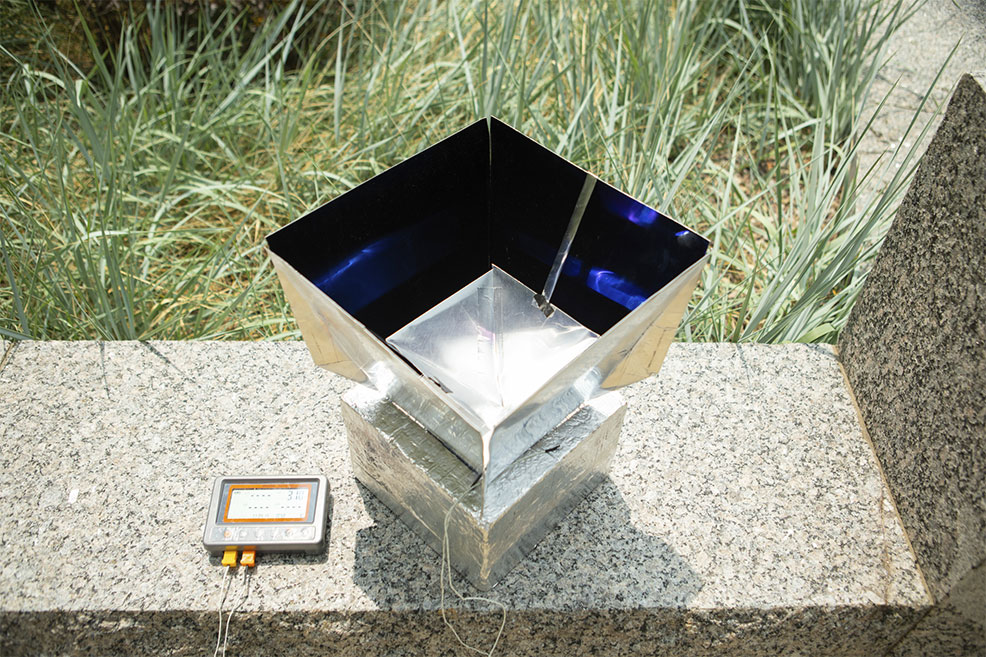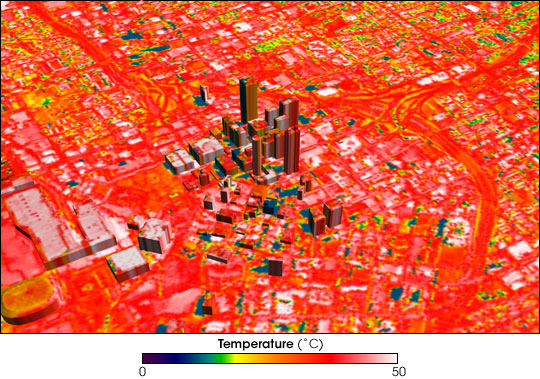
6th August 2019 In the future, this electricity-free tech could help cool buildings The University at Buffalo has revealed a new device able to cool parts of buildings by up to 11°C (20°F), without using electricity.
Engineers have designed a new system that can help cool buildings in crowded metropolitan areas without consuming electricity, an important innovation at a time when cities are working to adapt to climate change. The system consists of an inexpensive polymer/aluminium film at the bottom of a solar "shelter", which absorbs heat from the air inside the box and transmits that energy back into outer space. The shelter serves a dual purpose: helping to block incoming sunlight, while also beaming thermal radiation emitted from the film into the sky. "The polymer stays cool as it dissipates heat through thermal radiation, and can then cool down the environment," says co-first author Lyu Zhou, a PhD candidate in electrical engineering in the University at Buffalo School of Engineering and Applied Sciences. "This is called radiative or passive cooling, and it's very interesting because it does not consume electricity – it won't need a battery or other electricity source to realise cooling." "One of the innovations of our system is the ability to purposefully direct thermal emissions toward the sky," says Qiaoqiang Gan, PhD, associate professor of electrical engineering. "Normally, thermal emissions travel in all directions. We have found a way to beam the emissions in a narrow direction. This enables the system to be more effective in urban environments, where there are tall buildings on all sides. We use low-cost, commercially available materials, and find that they perform very well." When placed outside during the day, the solar shelter helped to reduce the temperature of a small, enclosed space by up to 6°C (11°F). At night, that figure rose to 11°C (20°F). The shelter-and-box system measures 46 cm (18") tall, 25 cm (10") wide and 25 cm (10") long. To cool an entire building, numerous units would need to be installed on a roof, much like air conditioning units that are a familiar sight today. Unlike the latter, however, this new system could operate without a power supply.
"During the night, radiative cooling is easy because we don't have solar input, so thermal emissions just go out and we realize radiative cooling easily," explains Haomin Song, PhD, study co-author. "But daytime cooling is a challenge, because the sun is shining. In this situation, you need to find strategies to prevent rooftops from heating up. You also need to find emissive materials that don't absorb solar energy. Our system addresses these challenges." One of the central components is the polymer/metal film, which is made from a sheet of aluminium coated with a clear polymer called polydimethylsiloxane. Aluminium reflects sunlight, while the polymer absorbs and dissipates heat from the surrounding air. Engineers placed the material at the bottom of a foam box and erected a solar "shelter" atop the box, using a solar energy-absorbing material to construct four outward-slanting walls, along with an inverted square cone within those walls. "If you look at the headlight of your car, it has a certain structure that allows it to direct the light in a certain direction," Gan says. "We follow this kind of a design. The structure of our beam-shaping system increases our access to the sky. The ability to direct the emissions improves the performance of the system in crowded areas." The research is published this week in the journal Nature Sustainability.
Comments »
If you enjoyed this article, please consider sharing it:
|








